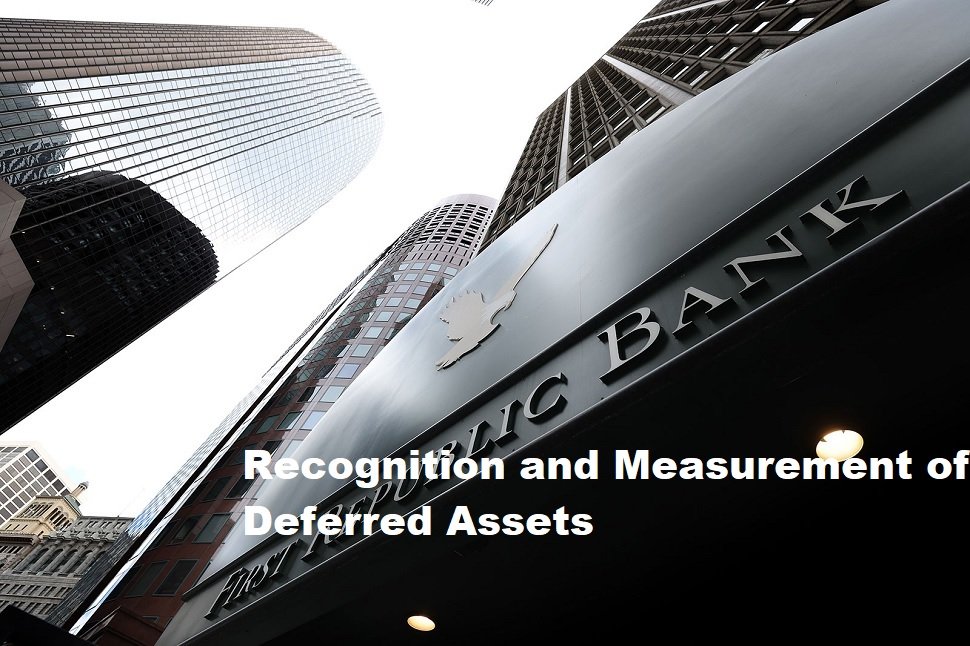Deferred assets, also known as deferred assets, are a concept in accounting that refers to expenses or costs that have been paid or received, but cannot yet be recognized as assets in the applicable reporting period. Recognition of these assets is delayed because the costs will provide economic benefits in the future. Deferred assets are recorded as current or non-current assets, depending on the period of expected economic benefits. In an accounting context, the term “deferred” means deferred, while “assets” are resources that are expected to provide economic benefits in the future. So, a deferred asset is an item paid in advance such as insurance, rental costs, or equipment purchases that has not been fully amortized. In practice, deferred assets are classified as current assets if the benefits will be received within one year and as non-current assets if the benefits will be received over the next year.
The concept of deferred assets has existed since ancient times as part of the financial recording system. However, with the development of science and modern business practices, this concept has become clearer and more structured. In the 15th century AD, international accounting adopted the concept of deferred assets as part of the foundations of an accrual-based accounting system, which was first introduced by Brother Luca Pacioli, the “father of accounting”. Since then, deferred assets have become an important part of the financial decision-making and planning process. In accounting, deferred assets are recognized according to the matching principle. This principle states that expenses should be recorded in the same time period as the revenue they generate. Therefore, costs related to deferred assets are not immediately associated as assets in the reporting period when the costs are incurred or received, but are instead recorded as deferred assets which will be amortized in line with the receipt of benefits in the future. This process ensures that the company recognizes expenses and income equally, resulting in more accurate and transparent financial reports. Deferred assets are very useful in reflecting a company’s long-term financial performance and are an important basis for analysis, evaluation and strategic decision making.
Difference between Deferred Assets and Other Assets
The main difference between deferred assets and other assets lies in their recognition and accounting treatment. Deferred assets are assets that represent payments made in advance for costs that will arise in the future. For example, insurance premiums paid this year, but which will be valid for the following year’s insurance period, are deferred assets. On the other hand, other assets include all kinds of items such as cash, receivables, inventory, land, buildings, equipment, etc. One important difference between deferred assets and other assets concerns the way they are recognized and amortized in financial statements. Deferred assets are recognized at the beginning of the payment period with the expectation that the cost of these assets will be amortized over time. This is usually done according to the relevant time period or as long as the economic benefits derived from the payment continue. However, this does not apply to physical or financial assets that do not have a limited usage period.
Deferred assets are often detailed in the “ezhofidcasset” or “other current assets” section of an organization’s balance sheet. Furthermore, the amount of deferred assets tends to change from one period to the next due to adjustments through deferred income or deferred expenses. Meanwhile, other assets are usually grouped based on their classification, such as current assets and non-current assets. The relationship between all types of assets is important for stakeholders in an organization to know, especially because this affects the company’s solvency and liquidity. Overall, the difference between deferred assets and other assets is an important concept that businesspeople, accountants, and investors must understand. Understanding how deferred assets work and interact with other assets in a company’s financial statements is an important step in financial performance analysis. By knowing how deferred assets and other assets are recognized and accounted for, business people, accountants and investors will be better able to interpret the information contained in financial reports and make the right decisions. In addition, a good understanding of this concept also helps users of financial reports in identifying potential risks and opportunities arising from the allocation of company resources. Thus, the role of experts in providing support and guidance regarding the differences between deferred assets and other assets is very crucial in achieving business goals effectively and efficiently.
Recognition and Measurement of Deferred Assets
Recognition of deferred assets involves identifying and determining the value of assets arising from temporary differences between taxes on taxable profits and profits recognized in the financial statements. The criteria for recognizing a deferred asset require the possibility that the amount of future taxable profit will be sufficient to reduce the temporary difference. In addition, management must have reasonable confidence that these temporary differences will be recovered within a reasonable time, usually within one to five years. If not, the deferred asset is not recognized as an asset in the financial statements. The deferred asset accounting measurement method involves using tax rates in effect or which have been substantively enacted at the end of the reporting period to calculate the amount of tax to be recovered. This process requires recording changes in tax rates and relevant tax rules, as well as adjusting the carrying value of deferred assets in accordance with these changes. This measurement method aims to provide relevant and reliable information regarding an entity’s ability to use deferred assets to reduce its tax burden in the future.
The tax treatment of deferred assets determines how these temporary differences affect future income tax calculations. In many cases, deferred assets will be translated into future reporting periods as a reduction in income tax expense or as a deduction from the tax value of taxable profits. In this context, the tax treatment of deferred assets must be communicated clearly and transparently in the explanatory notes to the financial statements, so that stakeholders understand how the entity’s tax position is affected by these temporary differences. To optimize the benefits and reduce the risks associated with deferred assets, management must actively monitor and manage temporary differences in positions. This step effectively involves strategic tax planning, ensuring compliance with applicable tax regulations, as well as updating knowledge regarding changes in tax regulations and rates. In addition, management must work closely with auditors and tax consultants to ensure proper management of deferred assets, maintain transparency for external stakeholders, and anticipate potential impacts on the entity’s reputation. By implementing efficient and effective management strategies, companies can maximize the benefits of deferred assets while reducing legal and financial risks.
Examples and Application Cases of Defered Assets
Examples and cases of deferred asset applications in business often include situations involving the formation of deferred assets. Deferred assets are created when a company has incurred costs that will actually produce economic benefits in the future, such as advertising costs or employee training. In this case, the costs are capitalized and recognized as an asset that will be amortized over the useful period. The first situation that involves defer asset formation is when a company undertakes a large marketing campaign to increase sales of their products. These marketing and promotional costs may have to be paid up front, while the sales benefits will be received over the next few years. Therefore, the company records these costs as transferred assets and allocates them over time according to increasing sales.
Another case involving transferred assets is when a company pays insurance premiums that are valid for a period of several years. In this case, the premium is not an expense that must be recognized in full in the first year, but rather is divided equally throughout the benefit period. Therefore, companies create deferred assets and allocate their costs over a certain period of time to reflect the insurance protection system provided. The impact of the formation of a deferred asset on a company’s financial statements includes an increase in the value of the asset and the distribution of expenses throughout the internal benefit period. Therefore, it affects the company’s net profit by reducing annual expenses and increasing annual profits in the short term. However, the amortization process will cause a decrease in the value of deferred assets, which ultimately reduces the company’s total assets and balances the overall financial statements.









